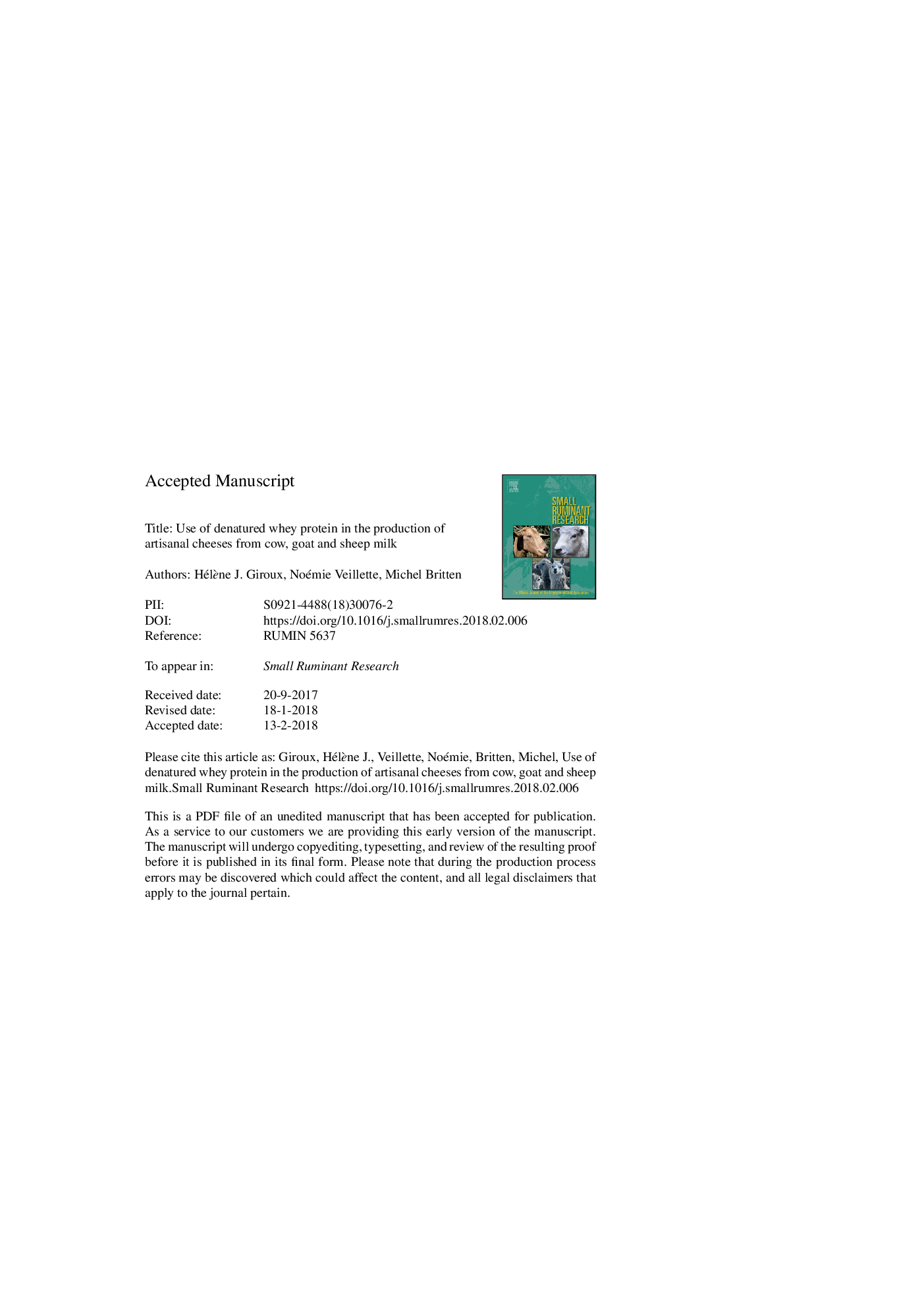| Article ID | Journal | Published Year | Pages | File Type |
|---|---|---|---|---|
| 8504234 | Small Ruminant Research | 2018 | 42 Pages |
Abstract
The objective of this study was to assess the potential of a whey protein (WP) heat-denaturation and recovery process adapted to small artisanal cheese plants. The effects of cheese's milk origin (cow, goat or sheep) and cheese whey type (sweet or acid) on the recovery rates and characteristics of WP aggregates were evaluated. The influence of the WP aggregate addition and dispersion method on the cheese-making properties of milk was also investigated. Gravity separation combined with sediment drainage was compared to centrifugation for the recovery of WP aggregates, and showed similar or slightly lower recovery rates depending on milk origin. The higher WP denaturation rate in sheep whey (both sweet and acid) resulted in better protein-aggregate recovery when compared to goat or cow whey. The diameter of WP aggregates was affected by the dispersion method, and large aggregates (6.94-30.56â¯Î¼m) were obtained with a rotor-stator disperser, and smaller aggregates (0.38-2.68â¯Î¼m) were obtained with a valve homogenizer. Regardless of whey origin, adding larger-diameter WP aggregates to cheese milk had no negative impact on rennet-induced coagulation, whereas smaller aggregates decreased curd firmness. WP aggregates of both diameter ranges reduced curd contraction capacity, which increased the curd mass fraction and moisture after the cooking step. Adding WP aggregates to milk increased cheese yield and moisture, and the dispersion method had no influence on these parameters, suggesting that a valve homogenizer is not required, which simplifies the process for artisanal cheese production.
Related Topics
Life Sciences
Agricultural and Biological Sciences
Animal Science and Zoology
Authors
Hélène J. Giroux, Noémie Veillette, Michel Britten,
